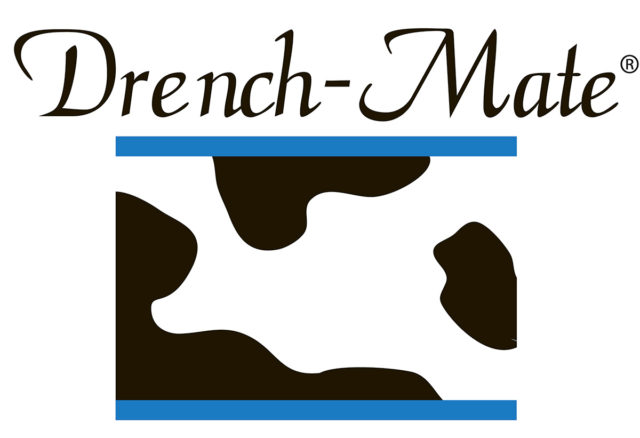It’s that time of year again. 2011 is a memory. It’s in the books. It’s history. If you’re like me, it’s time to reflect on where we’ve been, what we’ve learned and where we want to go. The trick is to take the wisdom and experience we’ve gained and apply it to the business environment we expect to encounter in the year to come.
This will certainly be my goal in 2012 because, in addition to my sales and purchasing duties at Vita Plus Corporation, I will assume the chairmanship of the American Feed Industry Association’s board of directors.
I am looking forward to an exciting time as I work on many issues that will shape the future of agriculture and the feed industry.
It’s hard to deny that we suffer from information overload in a world that has increasing sources of instantaneous communications. So as you look to the year ahead, how do you rise above the noise to hear the messages you need to manage an intensely risky business like dairy production?
The first step is to gain a perspective of world economies and governments that affect the basic supply and demand equations that determine the costs of inputs and the price of outputs for the dairy enterprise.
Some of the key factors that will affect your margins in 2012 will transpire within the borders of the U.S.; others will happen a world away as nations struggle to increase the standard of living of their populations.
What am I watching as we move into 2012? The priorities may change as time passes, but I think the following areas will be significant items for dairy producers to watch in 2012:
• Can the U.S. develop the political will to deal with the long-term need to reduce government debt? I think we all know that we need a change in tax, entitlement and fiscal policies in order to deal with this problem.
It’s hard to predict the outcome in any election year, but whoever wins will face an electorate that expects a solution. I, for one, believe we will get it done – the economy and markets are ready to turn up sharply if consumers are confident in the future.
• How will the Food Safety Modernization Act be implemented by the Food and Drug Administration? How will the feed and dairy products industries adjust to the increased regulations and traceability required? It’s easy to loudly complain about the increased regulation costs, but do we really want to risk the trust of our consumers and customers by not doing all we can to improve the quality and safety of dairy products?
Just think of the Chinese dairy industry and how it may not recover for generations from the lack of trust in local dairy products. This has created much of the current torrid export demand for U.S. dairy products and higher milk prices we have recently experienced.
• How will the European Union deal with its debt crisis and what impacts will it have on how the EU is structured? This is an important demand consideration for U.S. dairy producers, as our economic recovery could be significantly lengthened if the EU has a recession due to this problem and because the EU is still one of our largest trading partners.
• Can the Chinese government stay the course of its latest five-year plan? This plan states that it will “prioritize more equitable wealth distribution, increase domestic consumption and improve social infrastructure and social safety nets.” The U.S. is also currently trying to do the same thing, right?
The difference is that we are doing it with 313 million people and a much higher standard of living. China has another billion people, with many living in rural areas on what we would consider less-than-ideal conditions.
This will be a real challenge – especially when the Chinese populace is able to view the rest of the world on a handheld phone. It’s no wonder the Chinese government has pretty significant Internet censorship.
• How will the Commodity Futures Trading Commission (CFTC) finally decide to regulate margin requirements and position reporting for futures trading firms? The latest MF Global bankruptcy has raised concerns from regulators, banks, traders and producers wondering just how safe their margin money is and how reliable the markets are in managing their risk.
We really don’t need more uncertainty or volatility in the markets. This event has made it more likely that tighter regulations will not only increase costs but also make it harder for unbridled speculation or “Hail Mary” trading strategies to cause problems for the larger market. Stay tuned.
So, what’s the bottom line to all of this for dairy producers?
1. Spend the time, effort and money it takes to know your milk production margins – both current and projected. Then ask yourself if you have the nerves and net worth to handle a 25 percent increase in costs or decrease in milk revenue.
If you think either your nerves or net worth are not strong enough to deal with those risks, protect your margins with a professional marketing plan.
2. Understand that it is not the past list of market fundamentals that set prices. You have a lot of new competitors (ethanol companies, Chinese feed buyers, etc., that see $5 corn as really, really cheap) for inputs and the customers for your milk production don’t live just down the road.
We are in an export-driven market, especially until the U.S. economy recovers. If the Chinese economy slows and the EU can’t get its problems under control, they will probably not purchase the amounts of dairy products they have been and prices could drop quickly.
3. Watch the value of the U.S. dollar versus the world. Even though the U.S. dollar may not be fundamentally strong, the dollar looks good compared to the Euro. A significantly stronger U.S. dollar may also dampen our milk product exports.
On the plus side, it may decrease the costs of many imported products, such as amino acids, minerals, vitamins and animal health items.
4. Find out what your professional advisers are thinking. What do they see on the horizon for specific changes coming for the products and services they provide? What steps do they see that you might take to improve your results? How are they helping to reduce your risks?
In upcoming months, I’ll try to help answer this last question with ideas and things to watch. Here’s to 2012 and all the success you deserve! PD
Gunderson is vice president of sales and marketing for the Vita Plus Corporation and chair-elect of the American Feed Industry Association.

Al Gunderson
Vice President of
Sales and Marketing
Vita Plus Corporation
AGunderson@vitaplus.com







